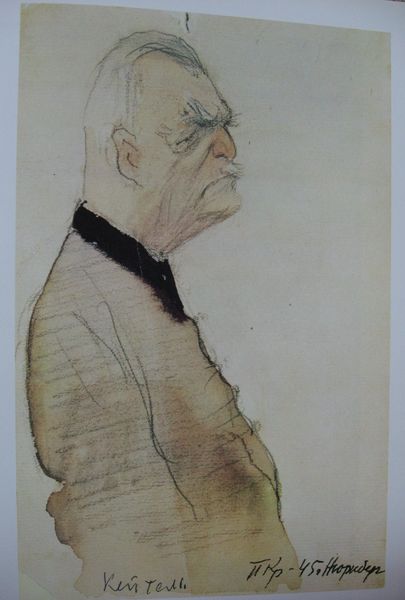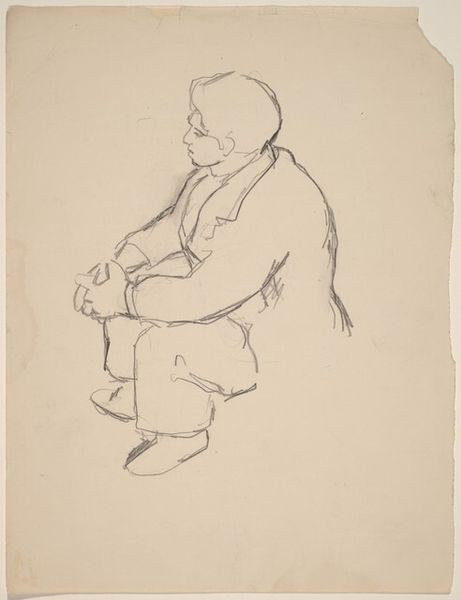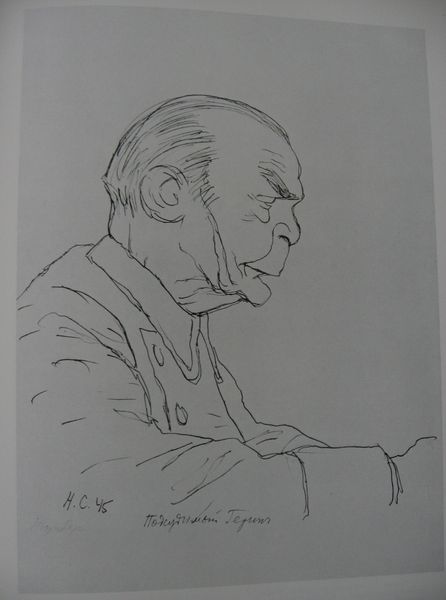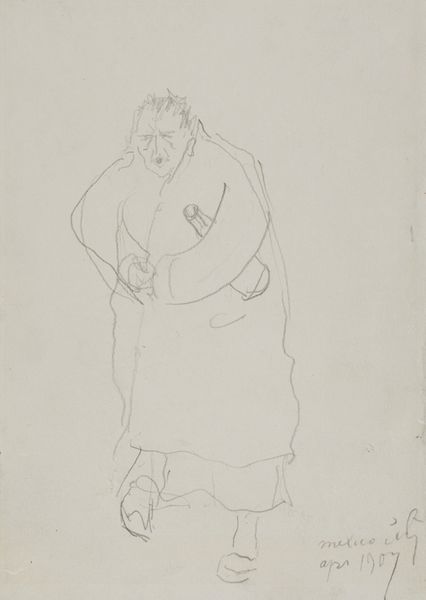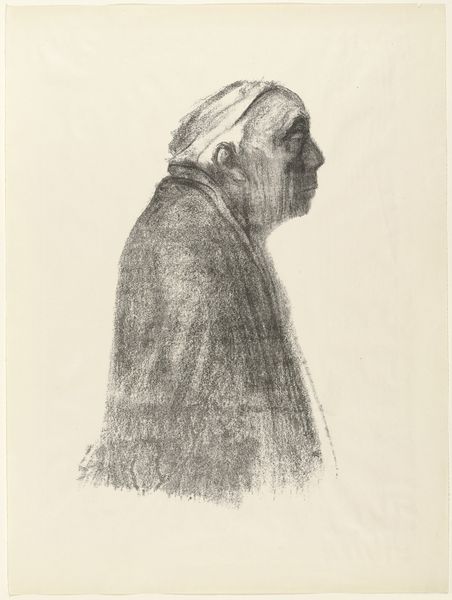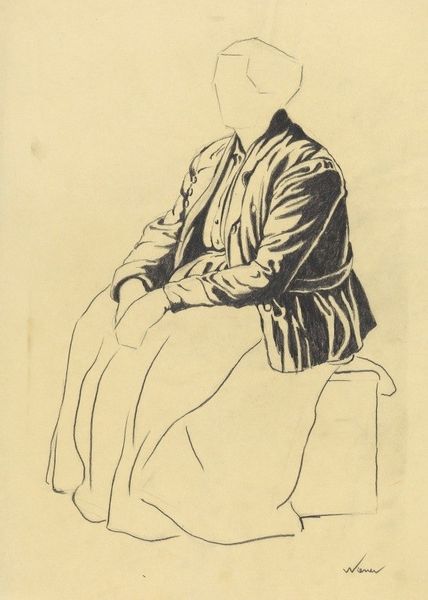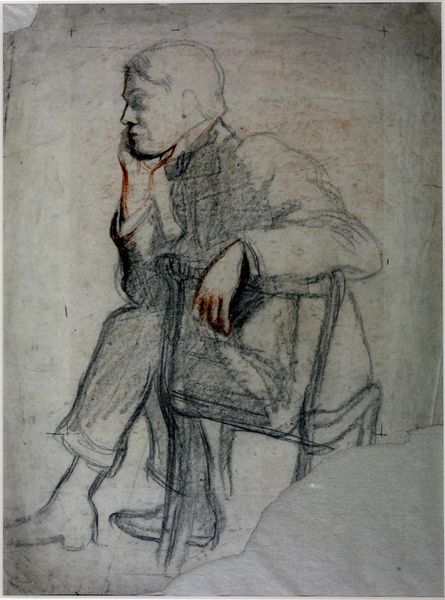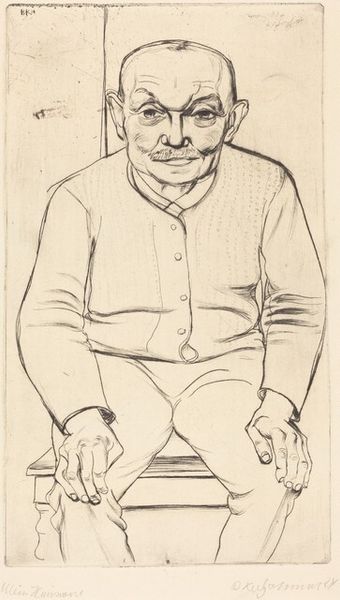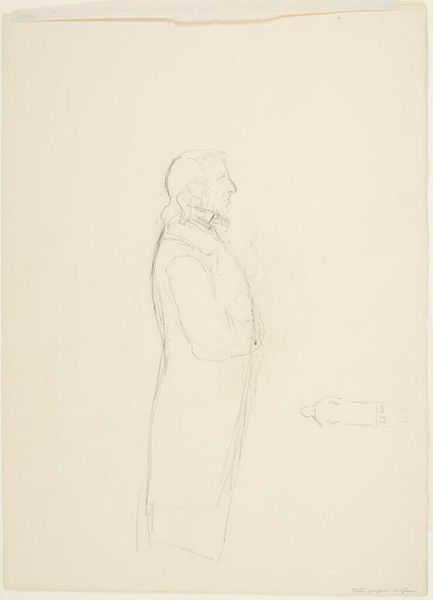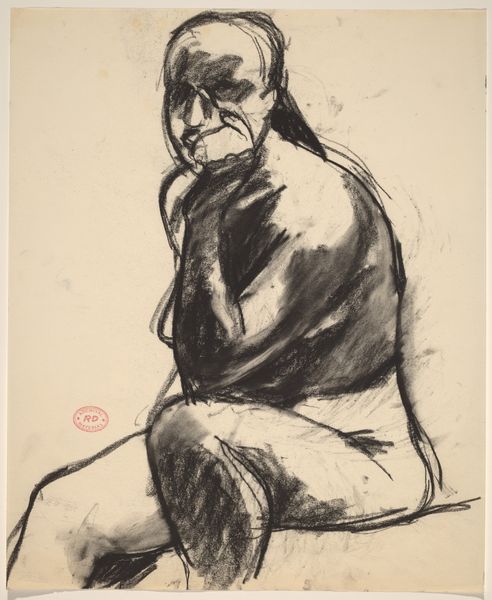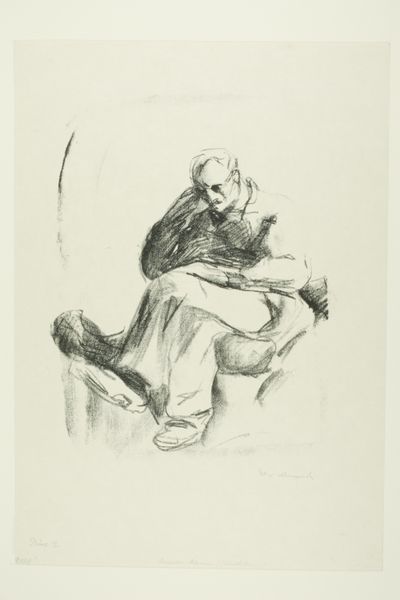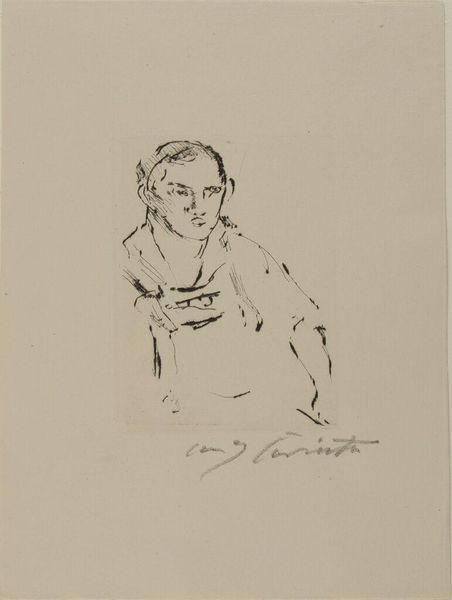
drawing, watercolor
#
portrait
#
drawing
#
figuration
#
watercolor
#
portrait drawing
#
watercolour illustration
#
watercolor
Copyright: Kukryniksy,Fair Use
Editor: We’re looking at an Untitled watercolor and drawing by Kukryniksy, created in 1943. There's a contemplative mood here, achieved through the slumped posture and muted color palette. What stands out to you? Curator: The material conditions of wartime production are evident. Notice the limitations imposed by the potential scarcity of vibrant pigments during the height of World War II. This impacts our interpretation – does the muted palette reflect available resources, or intentional artistic choices tied to a somber social landscape? Editor: That’s a compelling point. The subdued colors do feel almost…intentional now that you mention it, rather than a lack of resources. Does the medium, the humble watercolor, factor into this reading? Curator: Absolutely. Watercolor, often associated with preliminary sketches or amateur art, is deployed here to create a portrait, blurring the line between high art and everyday production. Consider the accessibility of watercolor materials to a broad audience, versus oil paints and canvas which can often be class markers in artwork. Editor: So, by using accessible materials, are they potentially commenting on the availability of art making to a larger group of people? Curator: Precisely. Further, investigate the social context. Kukryniksy were a collective; this collaborative approach to artmaking challenges the Romantic notion of the solitary genius, foregrounding labor and process instead. Consider, too, who would commission such a work, or perhaps even pose as its subject? Editor: It's fascinating how analyzing the materials and collaborative process shifts the entire narrative away from a singular artistic vision to a more collective social commentary. Curator: Indeed, by examining the ‘how’ and ‘why’ of its making, we unravel the complex layers of its meaning.
Comments
No comments
Be the first to comment and join the conversation on the ultimate creative platform.
